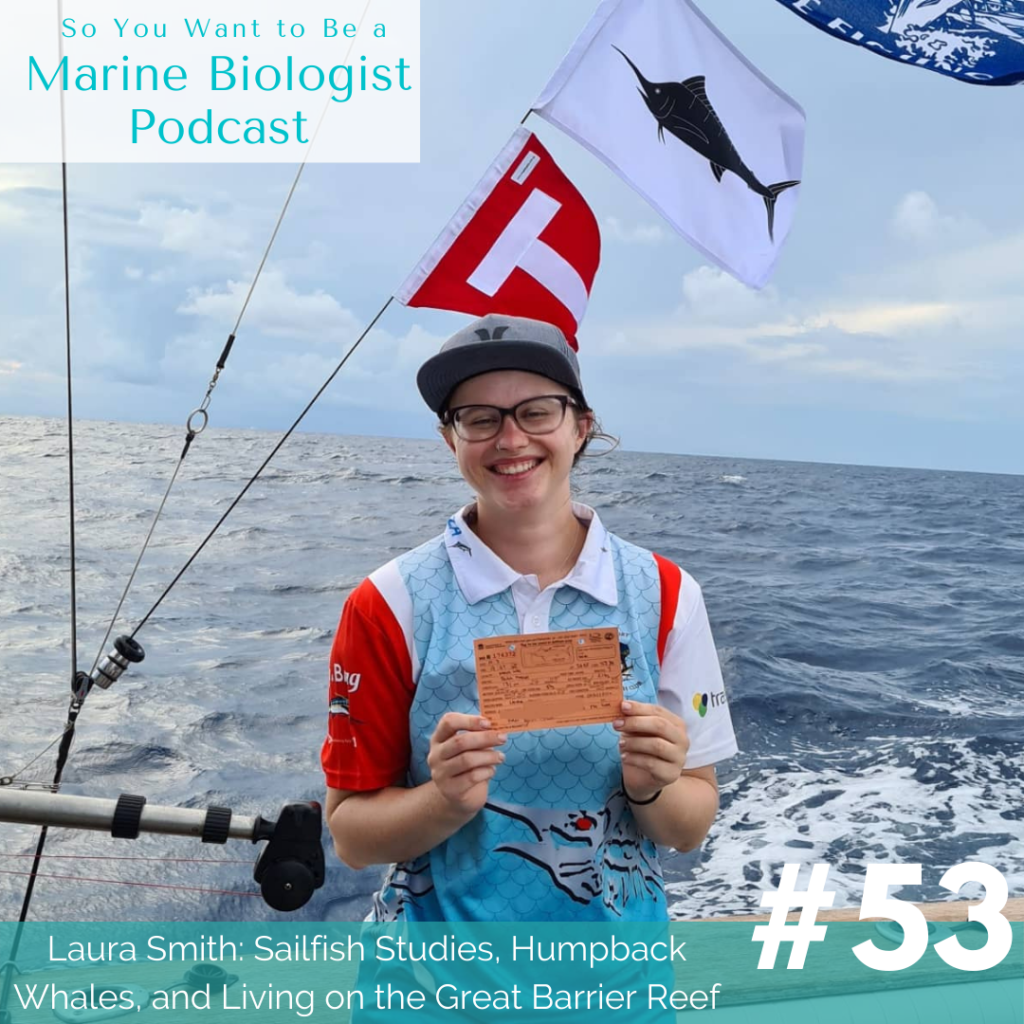Laura Smith is a marine biology PhD student currently hailing from Australia. In this episode, Laura shares her stories behind the scenes aboard humpback whale boats, doing sea turtle research on the Great Barrier Reef, and how she found herself studying one of the most iconic fish in the sea.
Quick Links
Sailfish
Acknowledgment of country
Billfish
Genomic work
Bait ball
Gulf of Carpentaria
Great Marlin Race
Heron Island
World Science Festival
Humpback breach
Humpback whale tail slap
Humpbacks & High Rises
Shark nets
Spyhopping
Eagle ray
Brisbane, Australia
Tiger shark
University of Queensland
Multiple paternity in sharks
Broadcast spawning
Show Notes
2:43 Laura’s PhD research focuses on sailfish, which she calls “iconic as a species.” Part of the reason why she was drawn to researching sailfish was because they can be found around the world, which gives Laura the opportunity to hopefully collaborate with people internationally.
3:39 Laura’s PhD research involves genomic work, which means looking at the whole genome of a species, instead of just parts of its DNA. For Laura, this includes collecting fin clips from sailfish in Australia.
6:12 Sailfish get their name from their giant dorsal fins, which resemble sails. They can raise and lower this sail to aid them while hunting prey.
6:59 Sailfish are actually a pretty surface-active species. We know this from a lot of pop-up satellite tag data.
10:35 Sailfish populations are down in Australia and worldwide. Laura explains how tuna and swordfish fisheries as well as billfish being very prey-motivated are reasons for their decrease in numbers.
15:01 There are places in Australia where scientists think that sailfish, usually a highly migratory species, have more resident populations. One such place is the Gulf of Carpentaria.
18:48 There’s a competition called the Great Marlin Race where people fund the cost of satellite tags and follow the designated fish to see which one swims the furthest.
21:23 While volunteering for the Queensland Turtle Research Project, Laura had the opportunity to go to Heron Island in the Great Barrier Reef for two weeks.
25:18 Laura got involved with Humpbacks & High Rises, an organization that goes out and monitors humpback whales during the winter. Laura discusses some key humpback whale behaviors she’s observed, including breaching, tail-slapping, and fin-slapping.
27:22 Humpbacks & High Rises is particularly interested in the effects of urbanization on whales.
31:23 Those two weeks on Heron Island changed the trajectory of Laura’s career. After her volunteer time there, she returned to her desk job in inner-city Brisbane and decided she wanted to get her PhD.
34:02 Laura and Kara talk tiger sharks.
37:38 Laura describes her favorite field story, which involves snorkeling with eagle rays around Heron Island.
40:51 Laura shares a funny anecdote involving suspicious turtle smells.
41:49 For her conservation ask, Laura encourages listeners to hold onto their passion for conservation and marine life. She acknowledges that sometimes it can be difficult to stay positive when inundated with news on climate change, plastic pollution, and etc, but she’s confident that it is possible to still make a difference.
